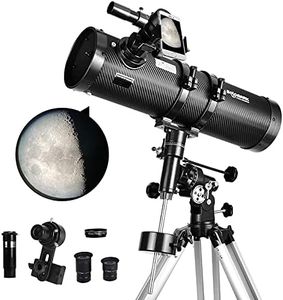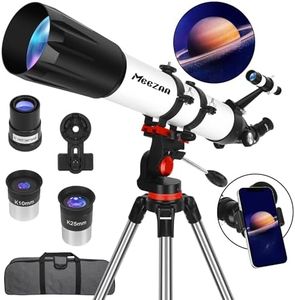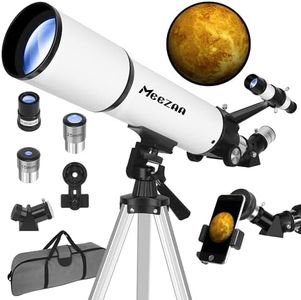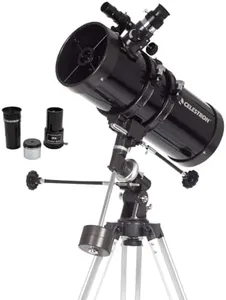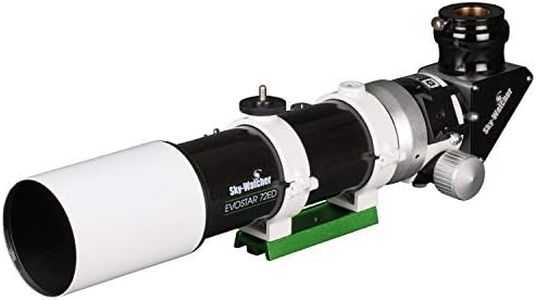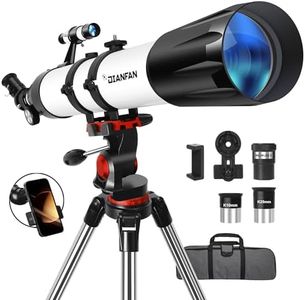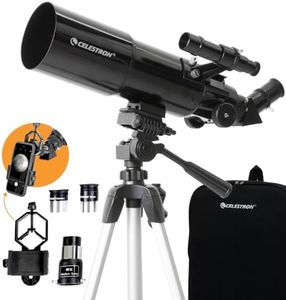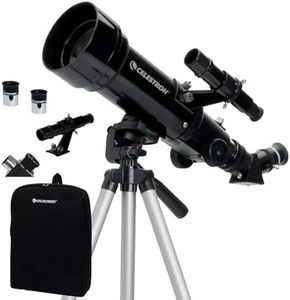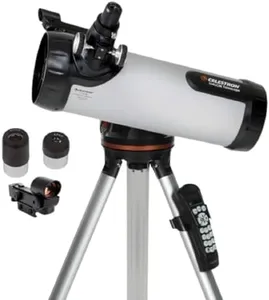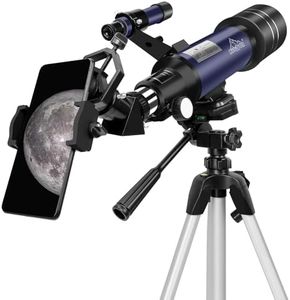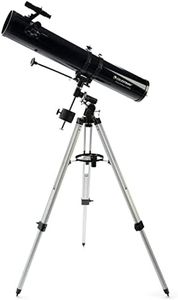We Use CookiesWe use cookies to enhance the security, performance,
functionality and for analytical and promotional activities. By continuing to browse this site you
are agreeing to our privacy policy
10 Best Telescopes For Adults
From leading brands and best sellers available on the web.Buying Guide for the Best Telescopes For Adults
Choosing a telescope as an adult can be an exciting journey into the world of astronomy. Telescopes come in various types and with different features, each offering a unique viewing experience. The right choice depends on your interests—whether you want to gaze at the Moon, study planets, observe distant galaxies, or capture stunning images. By understanding key specifications, you’ll be able to select a telescope that matches your observing goals and skill level, and that remains enjoyable as you advance in the hobby.ApertureAperture refers to the diameter of the telescope’s main lens or mirror and is measured in millimeters or inches. This is a crucial factor because the aperture determines how much light your telescope can collect, affecting how bright and detailed objects appear. Smaller apertures (up to 60-80mm) are lighter and great for quick glimpses of the Moon or bright planets. Medium apertures (90-130mm) offer better performance for viewing finer planetary details and faint deep-sky objects. Larger apertures (150mm and above) excel at revealing distant and dim celestial objects but can be heavier and bulkier. Consider your interest—if you want deep sky views, opt for a bigger aperture, but for portability and easy setup, a smaller aperture might be more practical.
Focal LengthThe focal length is the distance from the telescope's main lens or mirror to the point where it brings objects into focus, usually given in millimeters. This determines the magnification potential and field of view. Shorter focal lengths (below 700mm) offer a wider view, making them great for scanning star fields and observing large nebulae. Longer focal lengths (900mm and above) provide higher magnification, which is useful for looking at planets or the Moon in detail. If you prefer close-ups of planets, a longer focal length is helpful, but for general sky viewing and locating objects easily, a shorter one can be more forgiving.
Mount TypeThe mount is what holds the telescope steady and allows you to move it. The two main types are alt-azimuth (which moves up/down and left/right like a camera tripod) and equatorial (which is designed to track the motion of the stars as the Earth rotates). Alt-azimuth mounts are simple, easy to use, and great for beginners. Equatorial mounts require more setup but are ideal for tracking celestial objects smoothly, especially useful if you get interested in astrophotography or extended viewing sessions. Beginners who want something straightforward might favor an alt-azimuth, while those curious about tracking or imaging may wish to learn about equatorial mounts.
Optical DesignThere are three main optical designs: refractor, reflector, and compound (catadioptric). Refractors use lenses and are known for sharp, contrasty images, especially good for planets and the Moon, though larger ones can get expensive. Reflectors use mirrors and often provide more aperture for your money, which is great for deep sky objects, but they might need occasional alignment (collimation). Compound telescopes combine lenses and mirrors, offering versatility and compactness, making them easy to transport. Your choice depends on your viewing interests and willingness to perform minor maintenance—refractors are low maintenance, reflectors need some care, and compounds offer a balance.
PortabilityPortability describes how easy it is to move and store your telescope. Small telescopes or those designed to be compact are easy to carry and set up anywhere, while larger setups can be heavier and require more effort to move, especially if you plan to observe in different locations. If you want to take your telescope to dark sky sites or travel with it, pick a model that's light and easy to assemble. If you'll observe mostly from one place, weight and size may matter less, and you can opt for a bigger telescope.
Ease of UseEase of use depends on the telescope’s design, the complexity of the mount, and the amount of adjustment or assembly needed. Some telescopes are ready to go out of the box, while others might require alignment or collimation before each use. If you value quick setup and minimal fuss, look for telescopes designed for beginners or those with straightforward controls. If you enjoy learning new skills and tinkering, a slightly more complex system might be engaging and rewarding.

